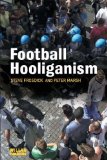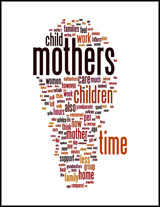Executive summary
Introduction
The report contains a review of research and theoretical approaches to football violence in Europe. The historical development of the problems in various countries is outlined. Specific attention is given to the role of the media, the emergence of overt racism at football matches and the alleged influence of alcohol consumption on violent behaviour. The content of each section of the report is summarised below.
History
The game of football has been associated with violence since its beginnings in 13th century England.
Medieval football matches involved hundreds of players, and were essentially pitched battles between the young men of rival villages and towns – often used as opportunities to settle old feuds, personal arguments and land disputes.
Forms of 'folk-football' existed in other European countries (such as the German Knappen and Florentine calcio in costume), but the roots of modern football are in these violent English rituals.
The much more disciplined game introduced to continental Europe in 1900s was the reformed pastime of the British aristocracy. Other European countries adopted this form of the game, associated with Victorian values of fair-play and retrained enthusiasm. Only two periods in British history have been relatively free of football-related violence: the inter-war years and the decade following the Second World War.
The behaviour now known as 'football hooliganism' originated in England in the early 1960s, and has been linked with the televising of matches (and of pitch-invasions, riots etc.) and with the 'reclaiming' of the game by the working classes.
In other European countries, similar patterns of behaviour emerged about 10 years later, in the early 1970s. Some researchers argue that a similar 'proletarianisation' of the game was involved, but there is little consensus on this issue, and much disagreement on the extent to which continental youth were influenced by British hooligans.
Theory and research perspectives
The major research and theoretical perspectives on football hooliganism derive mainly from British work conducted since the late 1960s. The principal sociological, psychological and anthropological approaches are critically reviewed - including those of Ian Taylor, John Clarke, Stuart Hall, Peter Marsh, John Williams and his colleagues, Gary Armstrong, Richard Giulianotti etc.
There are deep divisions within social science circles concerning explanations of football hooliganism, with often vitriolic debate beween Marxist sociologists, so-called 'figurationalists', social psychologists and more empirically oriented researchers. This atmosphere has hindered the emergence of truly multi-disciplinary perspectives.
It is generally agreed that British football hooliganism has probably been over-researched. Despite a general decline in violence at British football matches, the phenomenon still attracts a disproportionate amount of research activity.
Research in other European countries has grown in scale since the early 1980s. The work of German, Dutch and Italian social scientists is reviewed. Much of this research has taken British theoretical perspectives as a starting point, although more 'local' approaches are now evident in some countries.
The increase in work in these countries has led to a more Europe- wide approach to the problems of football violence, with a number of collaborative programmes now underway. The level of cross-cultural variation in the patterns of behaviour of football fans, however, presents a number of problems for this kind of research.
It is suggested that the focus purely on behaviour at football games in Europe may be too limiting. The subject might be better considered in the context of the more general rise in juvenile crime and delinquency in many countries and the emergence of new deviant sub-cultures
Cross-national variations
There has been no systematic recording of football-related violent incidents in any European country. The lack of quantitative or reliable empirical data on football-related violence, and particularly the lack of comparable data, makes assessment of the variations and similarities between European countries very difficult, but some general conclusions can be drawn from the available evidence.
It is clear that some form of disorderly behaviour has occurred in virtually every country in which football is played. Disorder of some kind appears to be a near-universal and seemingly inevitable accompaniment to the game.
Football-related disorder is not, however, necessarily of the same nature, or influenced by the same causal factors, in all of the cultures in which it occurs. Even the most dogmatic academics have come to admit that 'universal' explanations cannot accommodate all cross-cultural variations.
Both the extent and the nature of football-related violence are influenced by different historical, social, economic, political and cultural factors in different European countries. Social class has been a significant factor in England, for example, religious sectarianism in Scotland and Northern Ireland, sub-nationalist politics in Spain, historical regional antagonisms in Italy, etc.
There are, however, significant cross-national similarities in the 'stages of development' of the problem. Most countries experience an initial stage of sporadic violence directed mainly at referees and players, followed by a second stage involving violence between opposing groups of fans and against police/security officers inside the stadium, and a third stage involving an increase in violent encounters between these groups outside the stadium.
In most European countries, football-related violence is currently a predominantly internal problem, with the majority of incidents occurring at club-level matches, while supporters of the national team abroad are generally better-behaved. The English are an obvious exception to this rule, and rivalries between some other nations (e.g. Germany and the Netherlands) have led to violence, but these incidents seem recently to have diminished.
Internally, however, fans tend to cause more trouble at 'away' matches than when supporting their team at home. This is a common pattern across Europe.
Apart from Britain, the nations currently experiencing the most significant problems of football-related violence are: Italy, Germany, the Netherlands and Belgium. The available data indicate that levels of football-related violence in these countries are roughly similar, with incidents occurring at around 10% of matches (or around 10% of supporters classifiable as 'violent').
Austria, Sweden and Denmark also experience some problems with football-related violence, although these appear to be on a smaller scale. In Denmark, a new style of non-violent, carnivalesque fan-culture, promoted by the 'Roligans' (a pun on 'hooligans', from 'rolig' meaning 'peaceful'), is gaining popularity.
France, Spain, Portugal and Switzerland have also experienced episodes of violence – although football hooliganism cannot be said to be a major problem in these countries. In France and Switzerland, the theatrical, flamboyant Italian style of support (but largely without the passionate hostilities) has superseded the dour, and more violent, English style.
Sporadic violence has also been reported in Greece, the Czech Republic, Albania and Turkey. Some of these may be isolated incidents, but there is no room for complacency, as these countries may currently be in the early 'stages' of the development pattern outlined above.
Football hooliganism is clearly not an exclusively 'British Disease'. Nor can the British hooligans be held entirely responsible for 'spreading' the disease in Europe. Research findings show that while some of the more violent European fans regard the English hooligans as role-models, others - including the Scottish 'Tartan Army' and the Danish Roligans have quite deliberately adopted a very different style of behaviour.
Media coverage
Football hooliganism is a highly visible phenomenon, as journalists and TV cameras are present at virtually every match. Since the 1960s, journalists have been sent to football matches to report on crowd behaviour as much as on the game itself.
As a result, media coverage of football-related disorder and violence is extensive, and the British tabloid press in particular devote apparently unlimited column inches to any incident that occurs, complete with sensationalist headlines.
Many researchers, and many non-academic observers, have argued that this sensationalism, together with a 'predictive' approach whereby violence at certain matches is anticipated by the media, has actually contributed to the problem. (In Britain, at least one academic 'school' regards 'media amplification' as the principal cause of the problem.)
The British press have also been criticised for their xenophobic approach to the coverage of international matches and tournaments. (It may be no coincidence that English fans tend to be the most belligerent in these contexts.) This tendency was particularly apparent during the Euro 96 championships, when at least one tabloid newspaper represented the England-Germany match as a resumption of the Second World War.
Although there is no direct equivalent of the British tabloid extremes in other European nations, most researchers have identified problems relating to media coverage of football hooliganism. In all of the countries with significant levels of football-related disorder, researchers have found that hooligans relish the media coverage they receive, and often positively seek it – with rival groups actively competing for column inches and mentions in sensational headlines.
The publicity-seeking tendencies of football fans can, however, be turned to beneficial effect. The extensive and highly positive coverage of the new, non-violent, 'carnival' groups such as Scotland's 'Tartan Army' and the Danish 'Roligans' has clearly been seen by them as a 'victory' over their badly-behaved rivals, and has helped to reinforce and perpetuate their exemplary behaviour.
The influence of the media was highlighted in a recent European Parliament report on football hooliganism, which recommended that the media avoid sensationalism and promote fair-play and sporting values.
We would go further, and recommend a systematic, pan-European media campaign to promote the non-violent 'carnival' groups while ruthlessly cutting off the oxygen-of-publicity supply to the 'hooligan' groups.
Racism
The true extent of racism among football supporters is almost impossible to quantify. Extensive speculation and debate on the subject is not supported by much reliable empirical data.
For the media and public opinion, however, racism among football fans is a serious problem, and often blamed for outbreaks of violence, particularly at international matches.
Among academics and professionals involved with football, the role of racism and far-right groups in football violence is a hotly debated issue. Some agencies, such as the British National Criminal Intelligence Service, regard their influence as minimal, while others have directly blamed them for violent incidents.
In Britain, racist chanting at matches still occurs, but at nowhere near the levels it reached in the 1970s and 80s, when black players were often greeted with monkey-noises and bananas. The recent decline may be due in part to campaigns designed to combat racism, such as the 'Let's Kick Racism Out of Football' campaign.
Elsewhere in Europe – particularly in Germany and Austria – there are some indications that the problem may be more persistent. In one survey, 20% of German fans reported sympathies with the neo-Nazi movement. In many cases, however, Nazi symbols and slogans may be used purely to shock and provoke, without any underlying political conviction.
The problem is certainly being taken seriously across Europe, and a number of initiatives have been launched, including the 'When Racism Wins, The Sport Loses' campaign in the Netherlands, 'No al Razzismo' in Italy and the Europe-wide initiative, 'All Different – All Equal'.
The success of these initiatives is difficult to measure, but the UK has certainly seen a recent decrease in racist behaviour at football grounds. While the existing campaigns in different countries may prove effective, there have also been calls for a more systematic, pan-European approach. A recent report to the European Parliament outlines recommendations for Europe-wide co-operation to combat racism.
Alcohol and football violence
Football violence in Britain is often reported in the media as resulting from excessive alcohol consumption. This view, however, is not shared by the large majority of social scientists who have conducted research on hooliganism. Neither is it the view popularly held in many other European countries.
Little research has focused specifically on the role of alcohol in football hooliganism. This is because it has been considered, at best, a peripheral issue in most studies. Some investigators, however, have recently claimed that drinking can 'aggravate' football violence and have supported calls for further restrictions at football grounds. Little evidence has been provided to support their claims.
Proposals for Europe-wide restrictions on the availability of alcohol at football games have recently been made by the European Parliament, although the legal status of such proposals is currently unclear. Such an approach, however, ignores the wide cross-national variations in the consumption of alcohol by football fans and its apparent effects.
The case of Scottish fans, whose behaviour has changed markedly for the better over the past 10 years, despite continuing patterns of 'heavy' drinking, is considered in some detail. It is clear that alcohol-related behaviours are not immutable and can change in relatively short periods of time.
The example of the Danish Roligans is also considered. These have drinking patterns very similar to those of English fans, put present few problems to the authorities. Drunkenness among the Danish fans is typically accompanied by good humour and positive sociability.
Other groups of fans, such as the Italian Ultras, rarely drink to excess when attending football matches and the role of alcohol in football violence in that country is thought to be completely insignificant.
Attention is given to a study in the United States which suggests that restrictions on the availability of alcohol at certain times may lead to increased problems due to 'compensatory' drinking at higher levels in the periods immediately before and after the restricted period.
It is concluded that restrictions on fans' drinking will have little impact on levels of hooliganism and, in some cases, may be counter-productive. Future research should be directed towards the modification of alcohol-related behaviours.
Tackling football violence
The approach taken by the British authorities to reducing football hooliganism has been largely reactive - increasingly sophisticated policing, surveillance and monitoring techniques, segregation of fans, restrictions on alcohol etc. The British Government has also introduced specific legislation to cover acts of 'hooliganism'.
While such measures are evident elsewhere in Europe, the German, Dutch and Belgian authorities, in particular, have been more proactive in their approach to the problem. The development of 'fan coaching' schemes appears to have had an impact on levels of violence in certain areas. Such schemes, which involve social workers deployed with groups of fans, provide useful models for other countries.
There is, however, a general lack of initiative from the major football clubs in Europe. While German clubs are involved to an extent in the fan coaching schemes, elsewhere there is little contact between club officials and the fan groups. It is suggested that local 'fan's forums', which allow genuine dialogue between officials and supporters, may help to reduce some of the problems.






